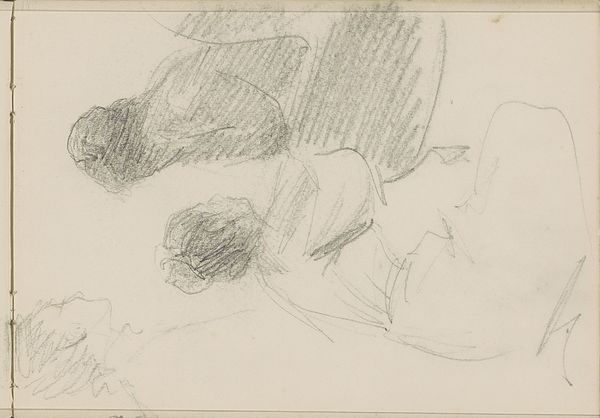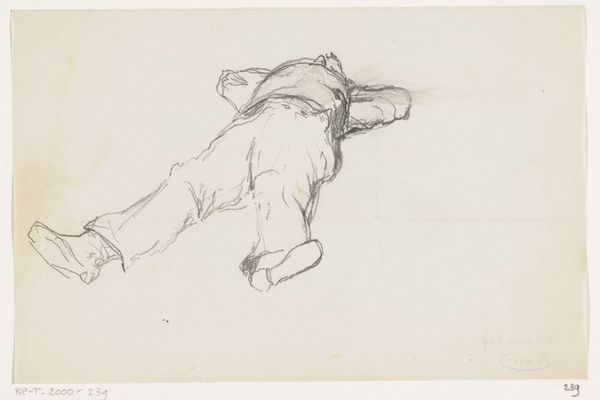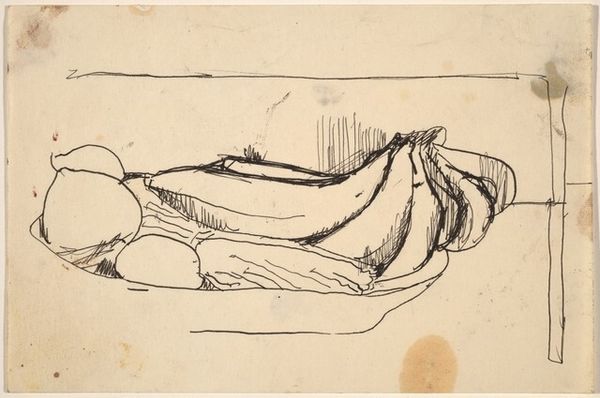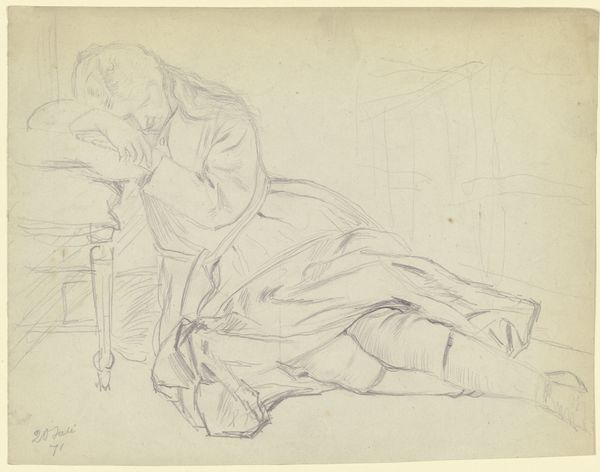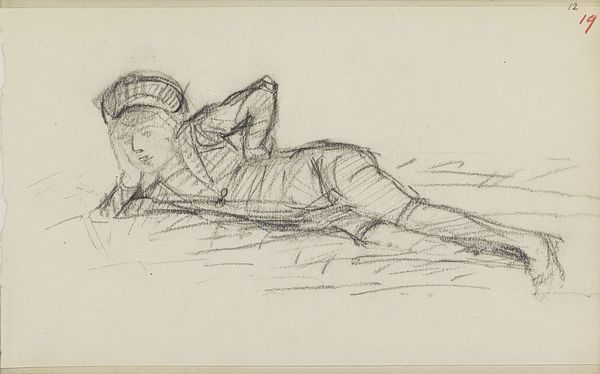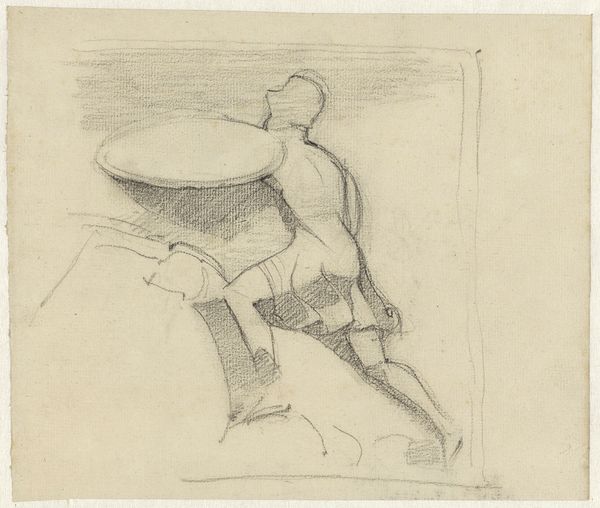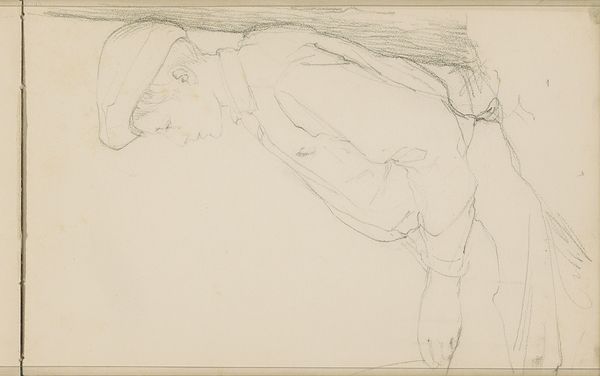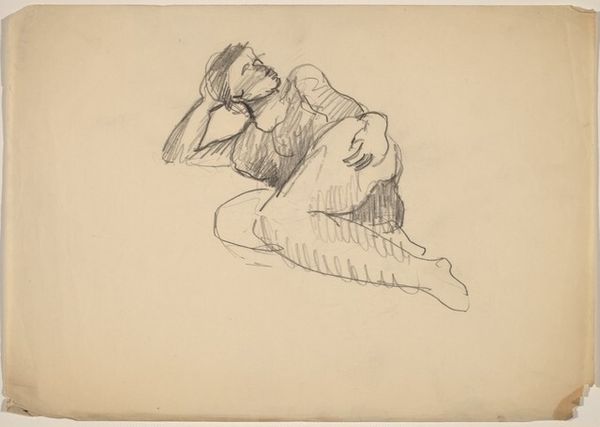
drawing, paper, pencil
#
portrait
#
drawing
#
pencil sketch
#
figuration
#
paper
#
pencil
#
academic-art
Dimensions: height 312 mm, width 481 mm
Copyright: Rijks Museum: Open Domain
Editor: This is Ferdinand Oldewelt's "Two Studies of a Boy Reading on the Ground," likely from sometime between 1867 and 1935, created using pencil on paper. There's a striking immediacy in these sketches, and I'm curious to know more about them. What's your perspective on this piece? Curator: Looking at these sketches, I'm drawn to consider the context of their production. Pencil sketches, especially studies like these, often served a very specific purpose within an artist's practice. What can we infer about the artist's access to materials and time? Editor: That’s interesting! I hadn’t thought about it that way. So you mean, what did pencil and paper represent materially, for an artist like Oldewelt? Was it about affordability? Curator: Precisely. Was it about the freedom and speed this medium offered for preliminary work, compared to painting or more elaborate drawing techniques? The very accessibility of pencil and paper democratizes artmaking, making studies like these important sites to consider artistic labour. Does this connect to wider trends or perhaps radical ideas about how art should be made in Oldewelt’s time? Editor: I guess it pushes against the idea of "high art" being separate from everyday practice and accessible materials. And I also noticed the quickness of the line and the academic style; it doesn't seem like Oldewelt was thinking of the paper or pencil as “lesser” somehow. Curator: Indeed. By understanding the material and its cultural value, we can better appreciate the artist's choices and perhaps even challenge established hierarchies within the art world. What else about the materiality jumps out at you? Editor: That’s given me a completely different angle on these drawings. Thinking about the paper and pencil less as just tools, and more as a signifier of access and the working methods. Curator: Exactly. Hopefully you will carry this idea with you through this and other works. The beauty lies not just in the final product, but also in the story of its making.
Comments
No comments
Be the first to comment and join the conversation on the ultimate creative platform.
